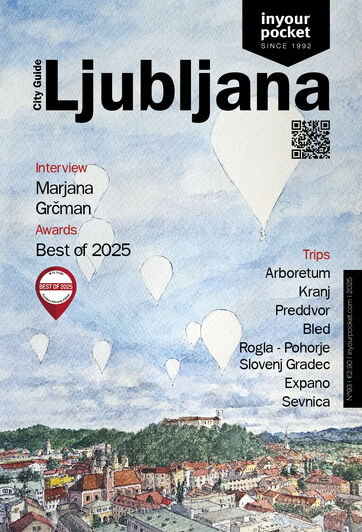Ask a ... Professor On All Things Slovene
more than a year ago
What 5 words best describe Slovene cuisine?
Different, tasty, natural, sustainable and modern - but based on long and diverse regional traditions.
What have been the most important historical periods for the development of Slovene cuisine?
The culinary and gastronomic image of modern Slovenia is founded on the cultural and historical conjunction of the European Alpine, Mediterranean and Pannonian lowland worlds. Many new foods were introduced in the period of Austro-Hungarian Monarchy, but it was during the French occupation at the end of the 18th century that the first cookbook in the Slovenian language was published by Valentin Vodnik in the year 1799. The development of major tourist centres (for example Bled, Rogaška Slatina, Dobrna , Portorož) from the second half of the 19th century has contributed substantially to the development of the eating culture. For centuries, Slovenian cuisine and gastronomy have been a part of the Central European cuisine, with a number of its own characteristics and specialties.
New innovation process in food started to appear after 1918 and after 1945 with the introduction of a number of Balkan dishes. The 1960s brought about the spread of the Italian pizza culture. A little later the first China restaurants came in Slovenia.
The process of discovering our own culinary and gastronomic heritage began in the 1980s, reflected by the increasing number of published gastronomic and culinary books and their incorporation into modern eating habits and into restaurant menus (for example the Slow Food movement).
How does Slovene cuisine differ from region to region?
The historical mentioned above also resulted in a rich and colourful selection of local culinary manifestations, which were further classified into 24 different gastronomic regions and 200 professionally selected representative dishes. The selected dishes do not reflect their popularity, nor do they occur exclusively in the region. The main criterion for their inclusion was their general ability to be recognized. Individual gastronomic regions and their inhabitants tend to identify with certain dishes and therefore these virtually act as their flags. Slovenian cuisine is a meeting place of historical developments, intercultural influence, local features, and the long-lasting attachment of Slovenians to their healthy natural environment and the fruits that it yields. All these factors contribute greatly to the continuation of this rich cultural heritage as well as to the continuous search for new solutions based on firm foundations.
How has the Slovene gastronomic scene changed during more recent times (ie after 1991)?
After 1991 the Slovene culinary scene saw an increase in international dishes, but at the same time we prepared a strategy of Slovene gastronomy and a culinary strategy for different Slovene regions (eg Central Slovenia, Gorenjska=Carniola, The Pohorje region, etc.). The number of culinary events and festivals has greatly increased, and we are also trying to promote “gostilna” - a traditional Slovene family-run restaurant or inn.
What developments do you see occurring over the next decade or two?
Slovenia must improve the international (world and European) recognition of its gastronomic traditions. We have very natural dishes and fantastic wines, as well as high quality spring water, alcoholic drinks, natural fruit juices and more.
What are a few traditional Slovene dishes that first time visitors to the country should absolutely try?
Traditional Slovene dishes that first time visitors to the country should absolutely try are:
- Štruklji (dumplings with different fillings, sweet or salty)
- Potica (Sweet roll with different filings)
- Kranjska Sausage (a world famous sausage that originated in Slovenia)
- Ričet (Barley porridge boiled with beans)
- Prekmurje Gibanica (Prekmurje layer cake)
- Bograč (Stew from Prekmurje)
- Pohorski lonec (Pohorje hot pot)
- Blejska Kremšnita (Bled cream cake)
- Idrijski Žlikrofi (Idrija dough pockets)
Can you tell us a little bit about the Gostilna Slovenia brand?
Gostilna Slovenia is new brand in Slovenia's culinary promotion. We started with the project in 2010 and today it includes 46 restaurants (or 'gostilna'). To become a member, the gostilna's menu must be comprised of more than 80 per cent Slovene dishes, and more than 70 per cent of its wines must be from on of Slovenia's three wine regions. There are many other conditions about architecture and interior design, music, local suppliers of ingredients, etc. Now we are preparing the model of Gostilna Slovenia as an internationally recognised brand. But this is a project for the future, as you know, the word Slovenia comes from the English word 'slow'!





Comments